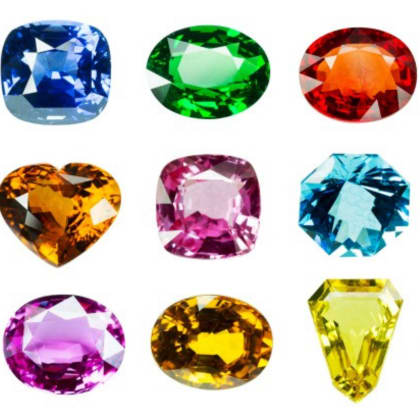Diamonds are forever… but they aren’t the only stone that will last a lifetime. While we love a classic diamond engagement ring, there are plenty of different stones for non traditional wedding rings that shouldn’t be overlooked. Some of these diamond alternatives are far more affordable and more unique than traditionally mined diamonds, so they are well worth your consideration. Shopping for an engagement ring can be difficult from choosing from unique engagement ring settings, shapes, and in this case, stones. To help you select the optimal sparkler for your forever, we have gathered the best stones for engagement rings. Read on to learn of the different types of stones for engagement rings and determine which one will be the queen of your ring finger.
Diamond

We’ll start with the fairest of them all, the diamond. It should come as no surprise that a diamond is one of the best stones for engagement rings. It has been the chosen one for centuries, ever since the Austrian Archduke Maximillian commissioned a diamond engagement ring for his bride-to-be, Mary of Burgundy, in 1477. Since then, couples all over the world have sought out diamond rings to mark their engagements.
While the most popular choice for an engagement ring for women, there’s nothing ordinary about this valuable stone. A diamond can be any matter of shape or size—every stone is unique, having a distinct color, number of inclusions, and cut. Whether you desire a round or oval cut diamond, a colored diamond with flakes of black and grey throughout (often called “salt & pepper”), or one that’s virtually colorless, there is a one-of-a-kind diamond waiting for you.
Lab Grown Diamonds
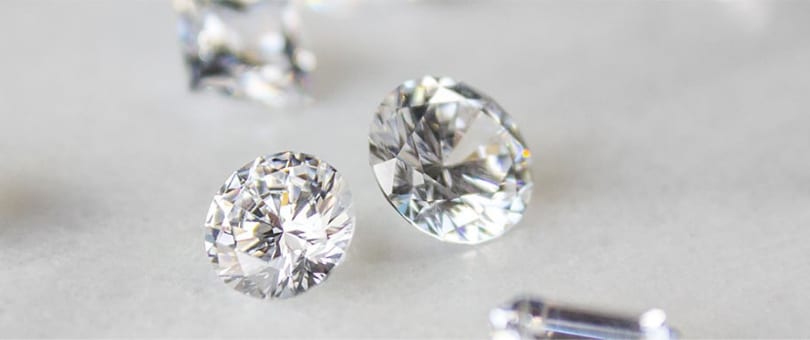
Lab-grown diamonds, also known as cultured diamonds or synthetic diamonds, are diamonds that are grown in a laboratory using various technologies. The process involves replicating the natural conditions under which diamonds are formed in the earth’s crust, such as high pressure and temperature, to create a diamond crystal structure. Lab grown diamonds have the same physical and chemical properties as natural diamonds, but they are more affordable and environmentally friendly. They are also considered to be conflict-free, as they are not mined from the earth and do not support unethical mining practices. Lab-grown diamonds are becoming increasingly popular as an alternative to traditional mined diamonds, and are often used in engagement rings and other jewelry. Because the demand for diamond jewelry is so high, some scientists have harnessed technology to develop true diamonds in a lab. Thus, lab diamond engagement rings have become very popular. Lab-grown diamonds are alike in every way to other diamonds except that they aren’t mined from the earth. As you might expect, growing diamonds in a lab uses fewer earthly resources and labor, making them much less expensive than traditionally mined diamonds. A lab-grown diamond is a wonderful alternative if you are looking for a more affordable and/or eco-friendly diamond option.
Simulated Diamonds

Simulated lab grown diamonds are also grown in a lab and made to appear like mined diamonds. However, simulated diamonds are made out of a variety of materials to achieve the ideal cut, color, and clarity, so, in most cases, they do not have the same chemical composition of a mined diamond as a lab-grown diamond would. For a stone that imitates the sparkle and shine of a true natural diamond without the environmental impact, or the price-tag (a simulated diamond can cost up to 80% less than a mined diamond), a simulated diamond is an incredible option for an engagement ring.
Moissanite
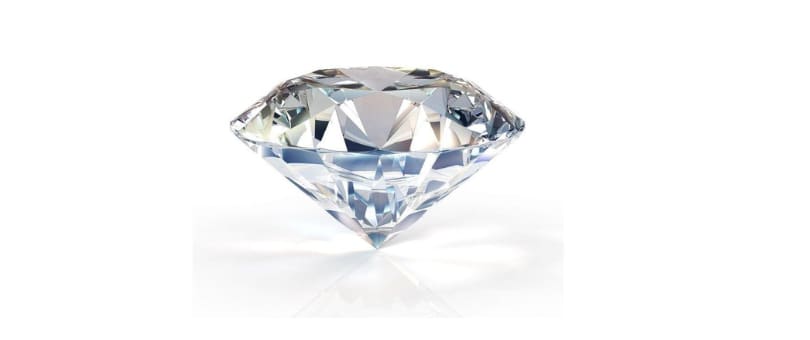
Moissanite was first discovered in a meteorite crater in Arizona over a hundred years ago but has been rarely found naturally since. Because of its rarity in nature, it’s created in a lab, making it a more affordable option among different types of engagement rings. While the incredible fire and brilliance of a Moissanite stone are far greater than that of a diamond stone, the price point is far lower. If your priority for an engagement ring is its sparkle and shine, you won’t find a sparklier stone than Moissanite—it has even been dubbed “the disco ball” because of the eye-catching way it reflects sunlight. Moissanite engagement rings have great characteristics and durability, which makes them a fabulous option for a proposal.
Sapphire
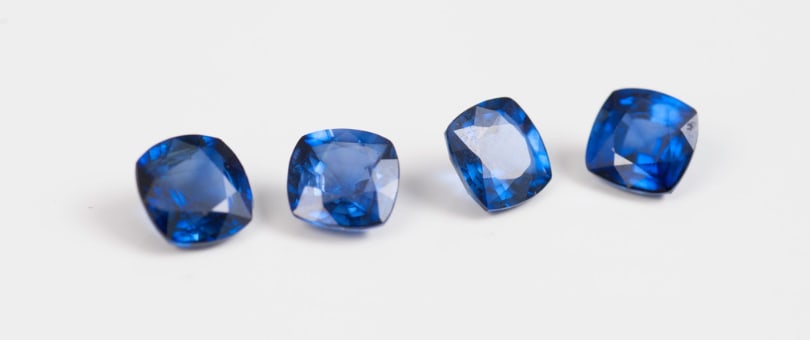
If you’re interested in a colored stone, a sapphire ring should be your top choice. While sapphires are often associated with blue, But there are different types of sapphires and they actually come in a range of colors, including peach, purple, and even colors that change in different lighting. Blue sapphires, particularly those with a deep, clear color, have a timeless elegance that’s hard to match. Their allure has been further enhanced by their association with iconic pieces like Kate Middleton’s engagement ring and the Heart of the Ocean.
Sapphire stones are also incredibly durable, second only to diamonds, so they will stand the test of time and everyday wear extremely well. So whether you choose a pink sapphire, a blue sapphire, or a purple one, a sapphire engagement ring will last a lifetime. Let the color of the stone truly shine by opting for a minimal prong setting and few, if any, surrounding stones.
Learn more about Sapphire, ruby and emeralds.
Onyx

For the color that matches everything, consider black onyx. This stone emits a black color and matte finish that is quite the opposite of a traditional diamond, ideal for the trendsetting or edgy bride. Black onyx is truly unique and will give any engagement ring a special, significant ora.
Because of its matte appearance, onyx will benefit from being set with pave diamonds. The combination will allow the engagement ring to catch people’s eyes while still retaining its edge. It should also be set with sturdy prongs and carefully handled when cleaned because of its softer nature relative to other stones. If you opt for a black onyx ring, consider pairing it with an alternative wedding band to match its unique style.
Emerald
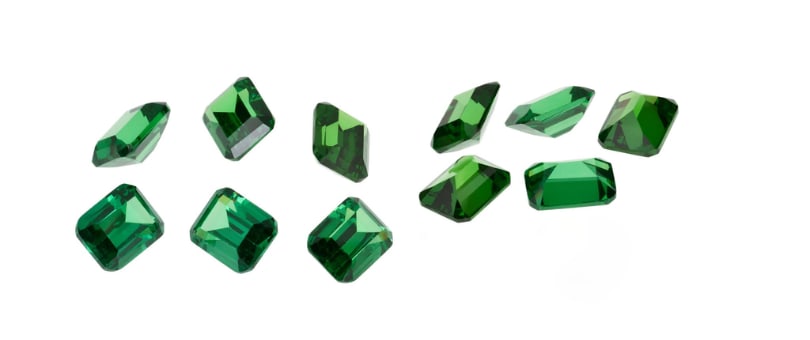
Sapphire isn’t the only classic colored gemstone for an engagement or even a wedding ring. Emerald is among the most coveted gemstones for both fine jewelry and engagement rings. Its color is vibrant and positively radiant. Plus, it exudes a vintage feel that is unmatched by any other colored gemstone. There is as much variety in cut, setting, and shape as there is with diamonds, so there are plenty of beautiful options to pick from for an emerald cut engagement ring.
To protect this slightly more fragile stone, consider a bezel setting to ensure all of its edges are safe from potential damage. When selecting a setting for your emerald engagement ring, emeralds look beautiful in yellow gold, white gold, and platinum alike, so you can choose the metal that suits you best.
Ruby
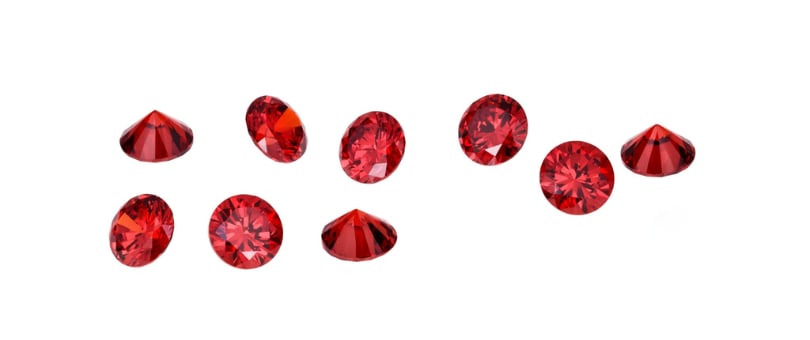
Ruby is another colored gem that makes for a beautiful center stone in an engagement ring. Known for being the birthstone of all those lucky enough to be born in July, a ruby engagement ring meaning symbolizes love, courage, passion, and protection. So, if you’ve always coveted this colored gem, it’s perfectly suitable to pick it for your engagement ring.
This precious gemstone is typically crimson, but the color will range depending on the region where it was mined and can vary from pink to violet to red. Whichever hue it is, the stone should be even in color and have minimal inclusions for optimal shine. When selecting or designing a ruby engagement ring, consider one with smaller diamonds on each side or all around the ruby in a halo setting to add even more sparkle and make the color pop. This reddish stone also pairs best with yellow gold or rose gold settings, which will match its warmth and regal essence.
Morganite
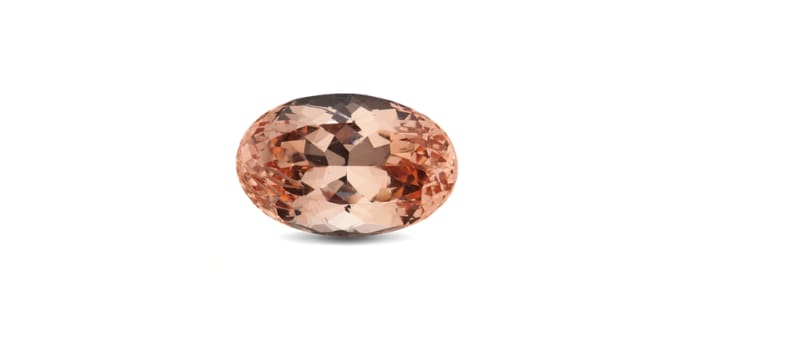
Morganite is a semi-precious stone that has gained popularity in recent years thanks to its pretty pink color that pairs beautifully with rose gold. When you set the two of these together in an engagement ring, you can achieve a stunning and supremely feminine style. That’s not the only reason morganite is a popular choice for an engagement ring, though. It also features incredible clarity, so it will always appear clear and radiant to the naked eye. Plus, it is a much more affordable alternative to a diamond.
If you’re a fan of the feminine color, a morganite stone is a beautiful choice. However, when it comes to selecting a setting for this precious stone, you’ll need to be mindful to choose something secure as morganite is a softer stone than diamond. Keep your stone safe by choosing a setting with sturdy prongs and be gentle when cleaning the ring. Because it is a trendier stone, don’t shy away from fresh and fashionable settings; morganite will always shine.
Opal
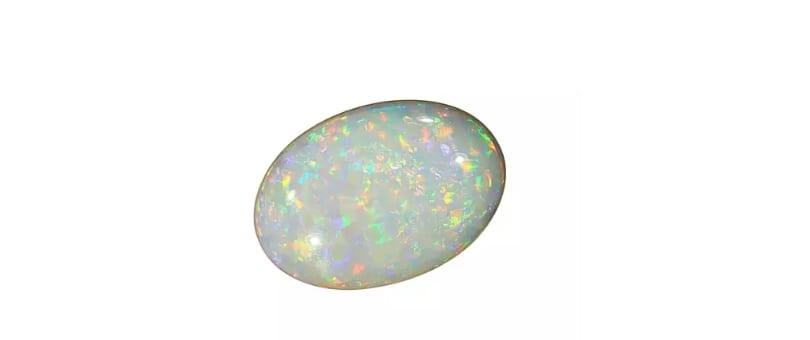
This magical stone flashes an array of colors to whoever beholds it. While the most common opal stones have a white or black base, the iridescent kaleidoscope of color the stone emits gives it its beauty. For a true one-of-a-kind engagement ring, look no further than one with an opal center stone.
Albeit beautiful, opals are more vulnerable than other gemstones to impacts and scratches, so it’s important to select a protective setting. Bezel settings are extremely secure and wrap around the entire stone, ensuring none of the stone’s sides are exposed. This style setting will not only protect an opal stone, but it also gives the ring a unique, vintage flair.
What is the Best Stone for an Engagement Ring?
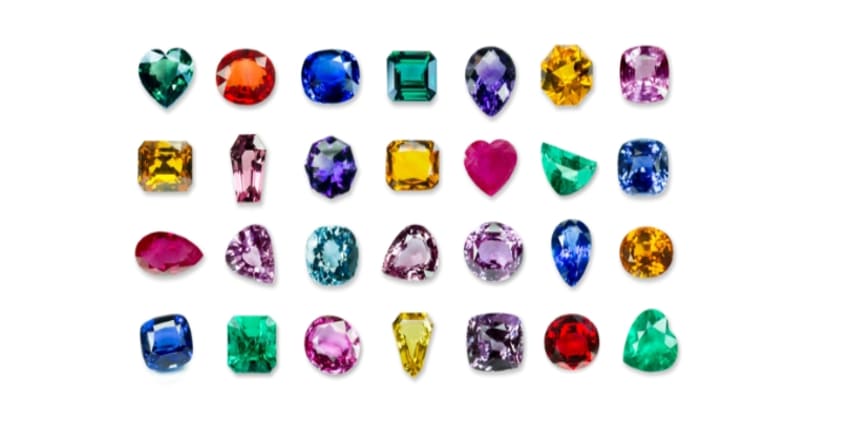
There are so many beautiful different stones for engagement rings, so how do you pick the best one? You can never go wrong with a classic diamond ring, but if you are looking for the look and feel of a diamond without the hefty price tag, a diamond simulant or lab grown diamond engagement ring is a great option.
Gone are the days of tradition trumping style, though, and with so many stunning colored gemstones to choose from, we’d be remiss to leave them out. Rubies, emeralds, and sapphires are timeless precious stones, while morganite, opal, and onyx are more current alternatives, but they won’t be going away anytime soon. You can’t go wrong with any of these beautiful stones in the center of your engagement ring, but you don’t have to pick just one. If you select a colored stone for your engagement ring, you can always accent it with a diamond wedding band, or vice versa.
Diamond Alternatives
When it comes to shopping for any type of ring, it can be challenging to choose the perfect engagement ring stone setting and ring design. Mined diamonds are a classic but can lead people to wonder, “how are diamonds formed?” Our Nexus diamond™ alternatives are both ethical and environmentally friendly because they’re not mined, and they’re sold for the fraction of the the cost.
With Nexus diamond alternatives, you can have peace of mind knowing it’s a conflict-free diamond alternative ring. Shop around to find the style that is true to you, and don’t be afraid to embrace something out of the ordinary.
*Here at Diamond Nexus, we strive to provide valuable information while being clear and honest about our products. The Nexus Diamond™ alternative is a patented lab created diamond simulate that, among all simulants, most closely imitates the look, weight and wear of a diamond, with two exceptions – it is absolutely perfect in every way, and it costs significantly less. Price points and environmental facts expressed in this blog were taken from popular online retailers and may vary. Learn more about the environmental impact of mining by visiting our blog.

